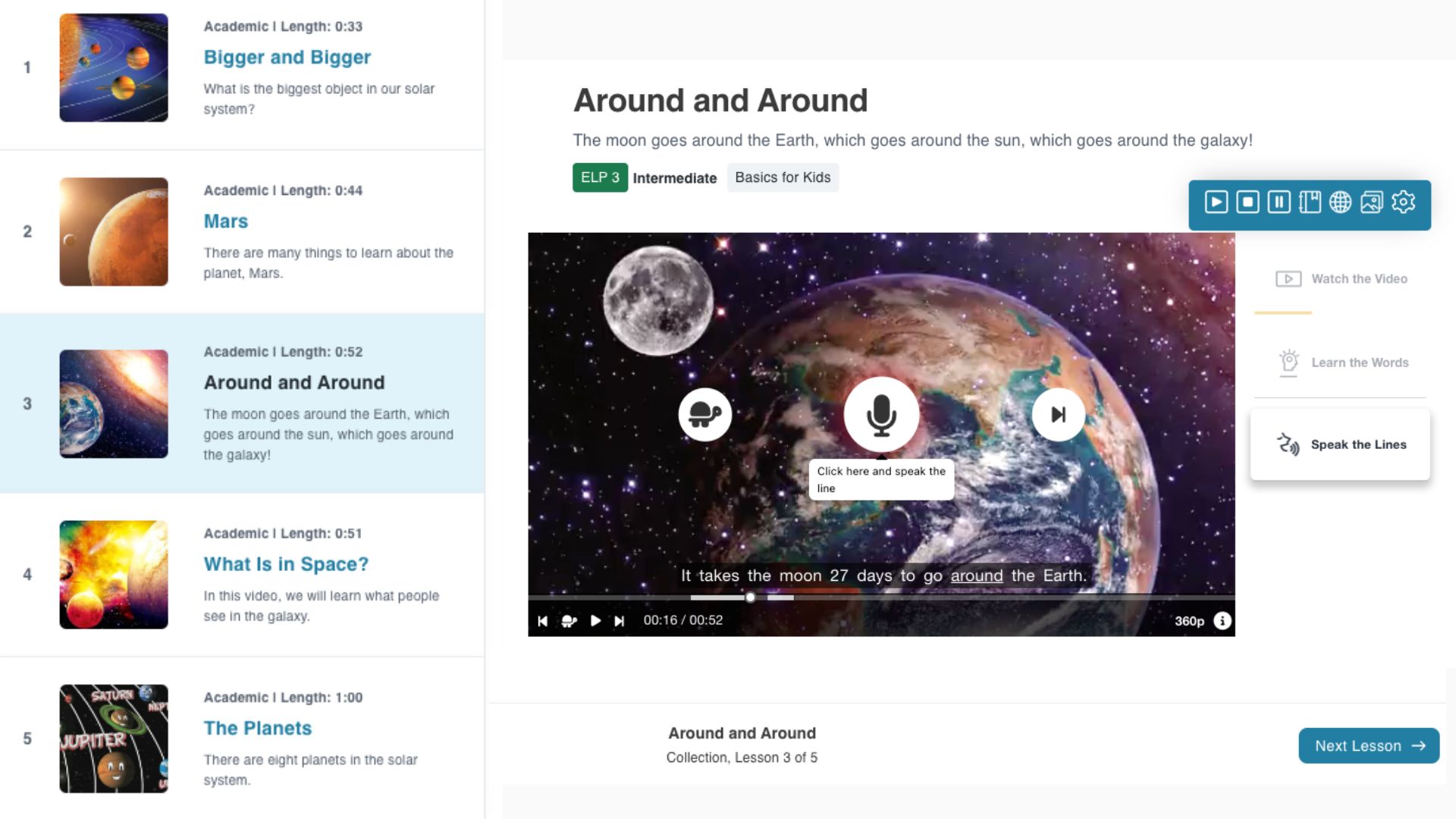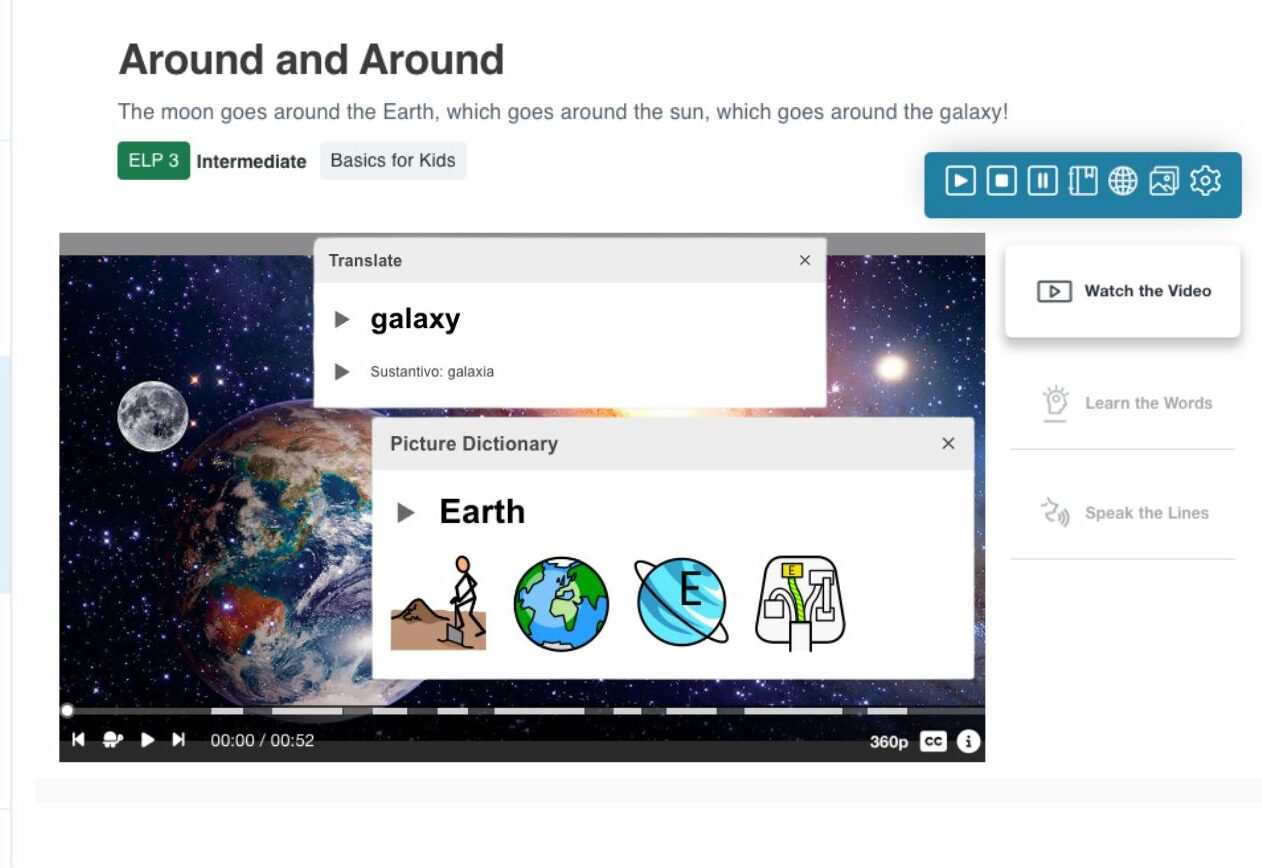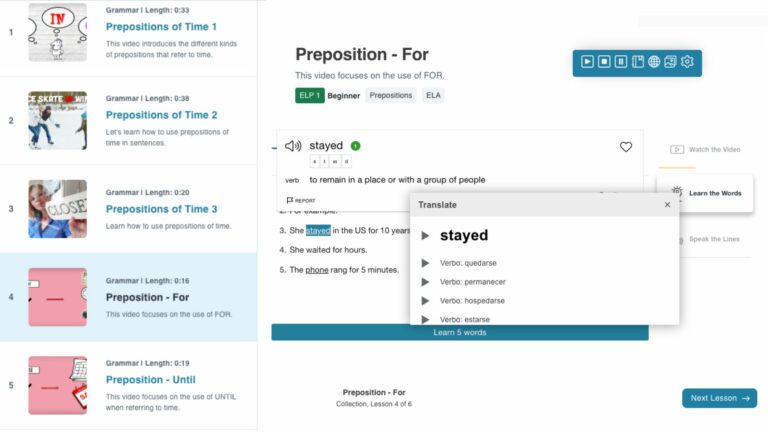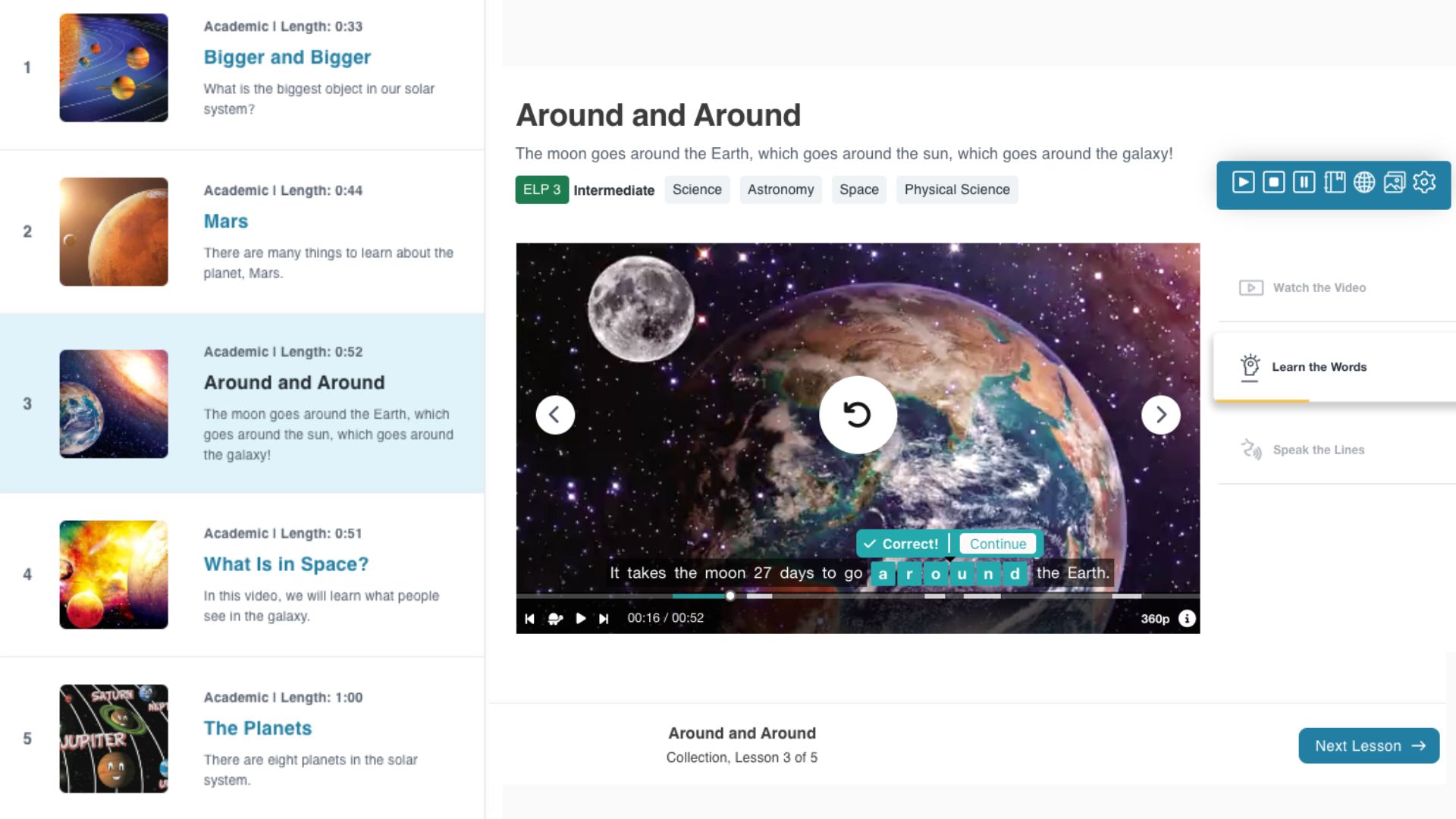Lingolift and the Four Domains of Language for Newcomers
Multilinguals gain mastery over academic language by developing proficiency in the four domains of language: listening, speaking, reading, and writing. Standards alignment ensures that students are building background knowledge while developing English language proficiency in order to prepare them to access core curriculum.
Lingolift lessons are designed to support the long-term acquisition of all four domains of language for newcomers, from the first 90 days and beyond.

Lingolift’s Approach to Four Domains of Language for Newcomers
Lingolift lessons engage students in both interpretive and expressive modes of communication, including opportunities to listen, speak, read, and write. Addressing these language expectations is key to effective instruction, as explained in the WIDA ELD Standards Framework and other guidance.
Lessons also use visual communication in the service of language learning through video, which is particularly useful for newcomers and emergent multilinguals. And teacher’s guides offer suggestions for differentiation that include opportunities for students to represent their understanding through images or gestures, which is especially helpful in the early stages of language acquisition.
Language Domain: Listening

In addition to reading and speaking, students will develop their listening skills while watching videos that follow the Watch, Learn, Speak instructional sequence.
Students can turn off captions to practice listening only, while still being able to access the strong visual support in each video lesson. Students also have built-in options to slow audio and repeat audio as many times as they need, giving them the necessary tools to work independently. While they practice their speaking, students can connect listening and speaking by hearing themselves talk using survival, social, and academic language and receive immediate feedback.
Language Domain: Speaking

Lingolift has thousands of curated video lessons that follow a Watch, Learn, Speak instructional sequence, offering multiple opportunities to engage with language across domains for each video.
Newcomers and emergent multilinguals can use Lingolift to practice speaking English and receive immediate feedback on pronunciation and fluency with built-in speech recognition.
Students have access to opportunities for consistent, self-directed speaking practice that they can use in any instructional setting, in class and at home. Teacher guidance includes opportunities for students to practice using the language learned from the video lessons in speaking authentically with peers.
Facts and Features
Fact: Spanish is the most common home language for English learners in 45 states. The next most commonly spoken primary languages include Arabic, Chinese, and Vietnamese.
Feature: Lingolift has a built-in Texthelp toolbar to provide students access to 15+ languages to support using native languages as an asset to acquire English.

Language Domain: Reading

Our Watch, Learn, Speak instructional sequence includes video captions that allow students to read along in English as they watch.
Additionally, our interactive video lessons offer opportunities to check for understanding while also reinforcing students’ English reading skills.

The built-in Texthelp toolbar allows students to access their native languages and supports translanguaging in 15+ languages.
Language Domain: Writing

Lingolift can also help students practice their writing skills as they work through our Watch, Learn, Speak instructional sequence.
Completing the fill-in-the-blank prompts will generate immediate feedback on their typed responses and reinforce spelling in English.
Our research-based Teacher’s Guides provide writing practice using sentence stems, key vocabulary words, and phrases to boost English language skills.
